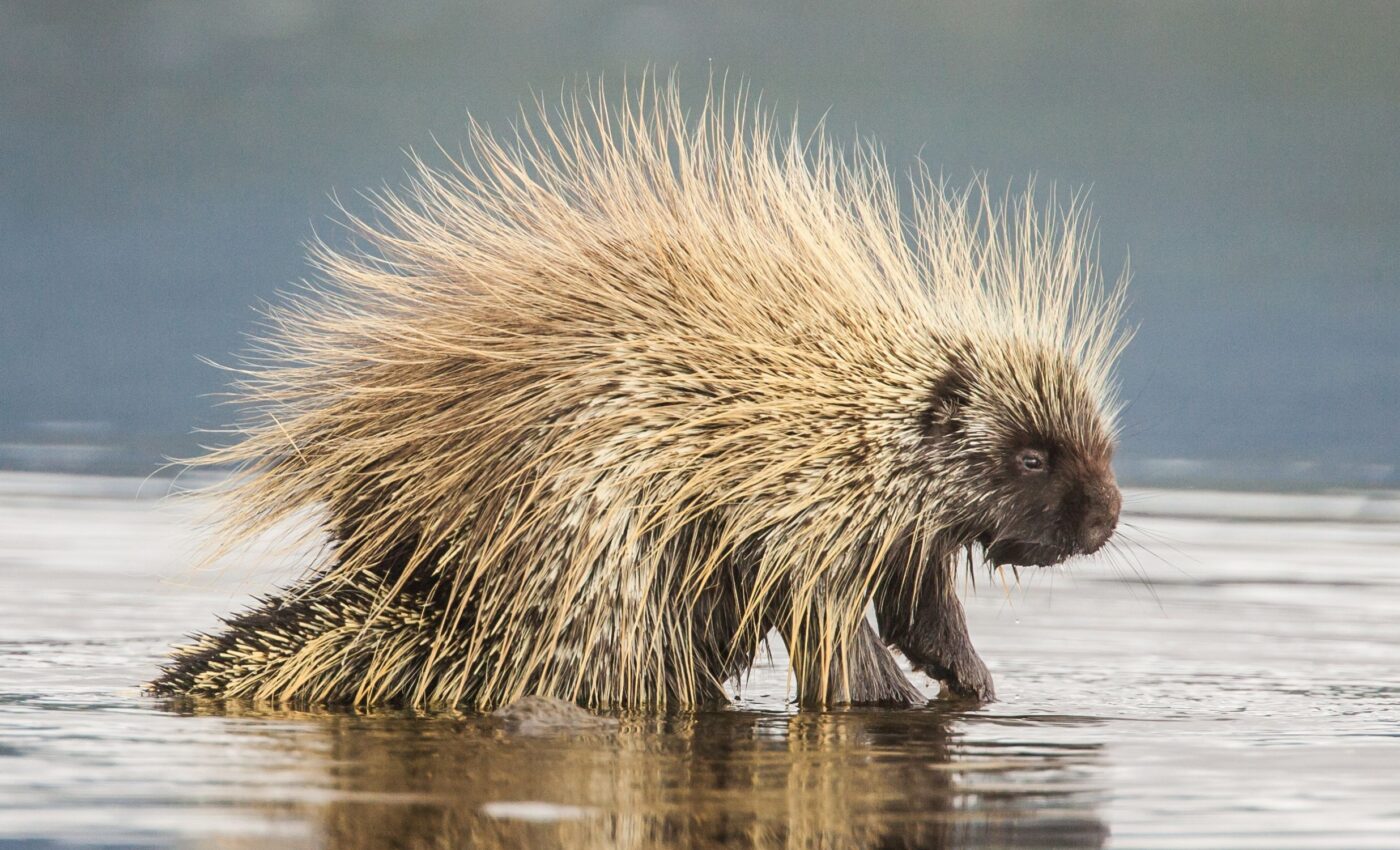
The evolutionary journey of North America's lone porcupine
In a remarkable breakthrough, a rare discovery in Florida has shed new light on the evolutionary timeline of North America’s solitary porcupine species.
A nearly complete porcupine skeleton unearthed by researchers offers vital clues to a long-standing debate among biologists and paleontologists regarding the origin of these spiny rodents.
Evolutionary puzzle of North America’s porcupine
For years, the evolutionary history of North America’s lone porcupine has puzzled scientists. While Central and South America boast 16 porcupine species, North America has just one.
DNA evidence indicates that this species originated about 10 million years ago. However, conflicting clues from the fossil record suggest that the porcupine might have evolved around 2.5 million years ago, which coincides with the onset of the ice ages.
Revolutionary fossil discovery
In a recent study, experts analyzed an exceptionally well-preserved skeleton found in a Florida limestone quarry.
This significant discovery by Art Poyer, a paleontologist at the Florida Museum, has brought a new perspective to the evolutionary timeline of North American porcupines.
“Upon first inspection, I was amazed,” said study senior author Jonathan Bloch. “It’s so rare to obtain a fossil like this, complete with a skull, jaws, and numerous other bones, offering us a comprehensive view of this extinct mammal‘s interaction with its environment.”
Insights from porcupine fossils
The detailed analysis, led by Natasha Vitek during her doctoral research at the Florida Museum of Natural History, involved meticulous examination of the skeleton’s distinctive features.
In collaboration with Bloch, Vitek also created a unique college course that allowed students to gain hands-on research experience by analyzing porcupine fossils.
“We examined every aspect of the bones – jaw, limbs, feet, and tail. This required a detailed series of comparisons that might not be immediately apparent,” noted Vitek.
A tale of two continents
Porcupines, a type of rodent whose ancestors likely originated in Africa over 30 million years ago, have a fascinating migratory history.
Their journey to South America is marked as a significant event in mammalian history, occurring when the continents of Africa and South America were much closer together, possibly involving rafting across oceans.
These rodents not only adapted to diverse habitats but also evolved into well-known groups such as guinea pigs, chinchillas, and capybaras upon reaching South America.
The connection between the continents via the Isthmus of Panama around 5 million years ago further complicated their evolutionary journey, with species migrations occurring in both directions between North and South America.
Adaptations and survival
In North America, adapting to new environments proved challenging for porcupines. They had to cope with brutal winters and significant changes in habitat, transitioning from tree-dwelling to land-walking lifestyles.
These adaptations included dietary changes and the loss of their prehensile tails – features that their South American counterparts retained.
“In winter, when their favorite foods are not around, they will bite into tree bark to get at the softer tissue underneath. It’s not great food, but it’s better than nothing,” explained Vitek. “We think this type of feeding selected for a particular jaw structure that makes them better at grinding.”
The experts noted that although North American porcupines still like climbing, they are not very good at it. They pointed to museum specimens which often show evidence of healed bone fractures that were likely caused by falling from trees.
Ancient origins of North America’s porcupines
The analysis of the Florida skeleton highlighted both similarities and differences with modern North American porcupines, suggesting a complex evolutionary history that predates the formation of the Isthmus of Panama.
While the study confirms the ancient roots of these porcupines in North America, many questions about their evolutionary path and the reasons for the extinction of other species remain unanswered.
“One unresolved aspect is whether these extinct species are direct ancestors of today’s North American porcupine,” said Vitek. “It’s possible that porcupines reached temperate regions twice, once along the Gulf Coast and again out west. We still have much to discover.”
This research not only provides a clearer picture of the evolutionary history of North America’s porcupines but also highlights the invaluable contributions of fossil discoveries to our understanding of past life on Earth.
The study is published in the journal Current Biology.
—–
Like what you read? Subscribe to our newsletter for engaging articles, exclusive content, and the latest updates.
Check us out on EarthSnap, a free app brought to you by Eric Ralls and Earth.com.
—–













